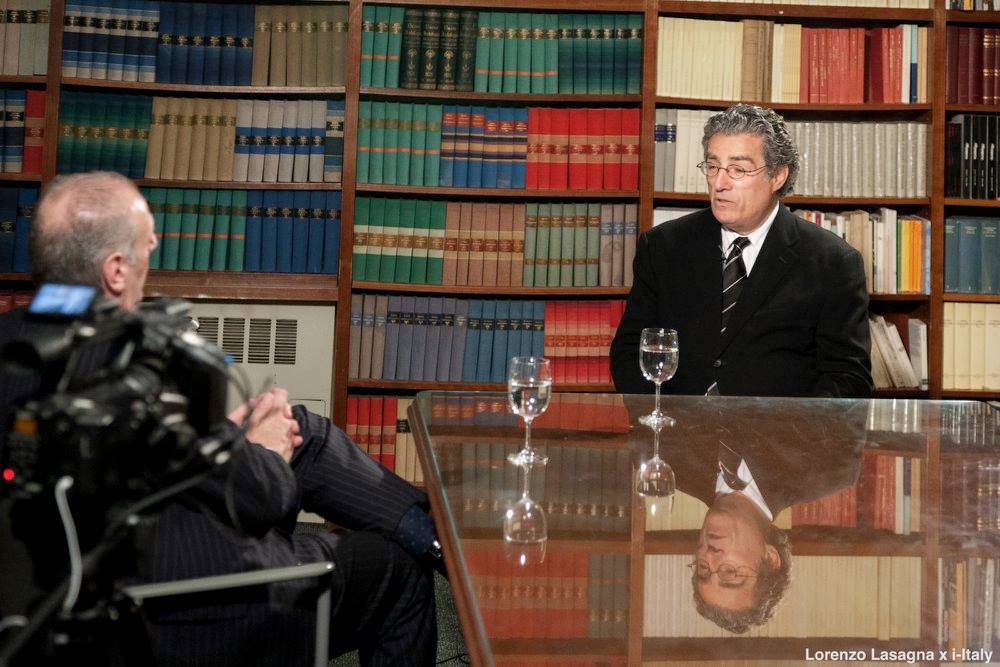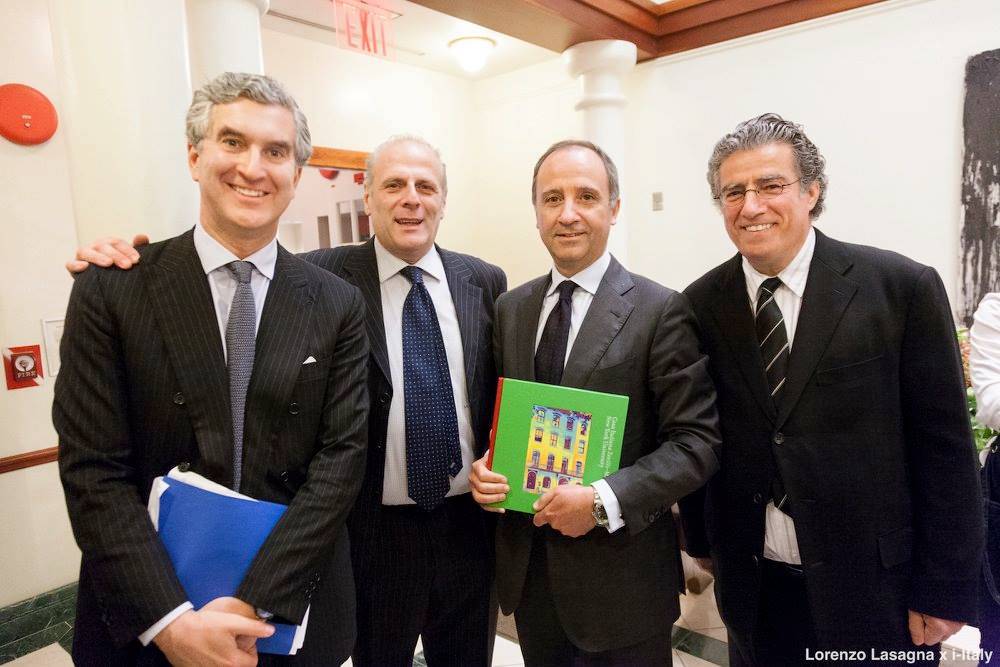Let’s Bring the Casa on Every Screen!
Let’s start with your (clearly Sardinian) last name. Tell us about your origins, your education and training, what your cultural interests are.
I was born in the province of Iglesias in the 1950s. I studied in Cagliari and then at the University of Pisa. I got my start in France with the Hachette Group, specifically in the field of communications. Then I came to the United States where since the late 80s I’ve been helping my wife Nancy manage a real estate practice.
The main thing your acquaintances remark upon is your passion for
contemporary Italian art. A passion you share with your wife. How did that passion come about? Was there a specific turning point?
As a student in Florence the 1970s, I fell in love with contemporary art, especially after seeing a Paul Klee exhibit. Since then I started to pay attention to what was being made both in Italy and abroad. Meeting Nancy in New York has me often going back to Italy to see what is being done today. I have to say that contemporary artists in our country are truly exceptional. I became interested in them by collecting... In fact, we initially began collecting Murano glass.
So Murano glass marked the birth of your passion...
Once again I have to thank my wife, because she was the first to pick out Murano glass at an auction. Back then there were no real detailed catalogs of the works, so we started cataloguing everything made in Murano from 1910 to the 1990s. We discovered all these artists through that process, including Carlo Scarpa, who had worked intensely for Venini and eventually became its artistic director for many years. Then there was Gio’ Ponti and the great Massimo Vignelli, who has been of immense importance to us. He meant a lot to us. And to our cultural education.
Massimo was a friend, an instigator, a mentor, a brother, a father. He helped us design our first exhibit and my book Murano: Glass from the Olnick Spanu Collection, which served as a companion to our various shows in America. We had 12 shows in the US, one of which later traveled to Spazio Oberdan in Milan, a space designed by architect Gae Aulenti. From there the exhibit returned to the US and traveled to many institutions and museums, the last one at the Metropolitan Museum, which dedicated two shows to the collection: one to Carlo Scarpa and one to the architect Buzzi.
Your passion evolved from glass to encompassing contemporary Italian art in all its forms: sculpture, painting, installation. How did you develop that collection?
Initially it was a collection of American – and, naturally, European – art, which focused on the mid-90s up. It was the Arte Povera Group born in Turin, and a group of young artists, of which there are now ten, that helped us develop a program: the Olnick Spanu Art Program. It’s located in Garrison, about an hour from New York, close to our house. A property of around 370 acres.
We’ve established a program that allows an Italian artist to come live with us and create, develop and install a work of art on the property. It’s a very ambitious and beautiful project. A necessary one from the perspective of those who, like me, are focused on the diffusion of Italian culture in the United States.
We bought an old factory and decided to construct an adjacent building that will serve to house our collection as well as thematic exhibits featuring our young artists-in-residence. It will also function as a library, because we want all Italian art books to be here in the US and get translated. It’s important to facilitate knowledge so that Americans can grow increasingly close to our art. We would like it to become a center dedicated entirely to contemporary art from the second part of the 20th century in the United States.
Let’s talk about Casa Italiana. You’ve recently been elected – unanimously – to chair our board of directors. But your relationship to Casa goes way back. You’ve been on our board from the beginning.
Practically since Casa was born. I met the Baroness Mariuccia Zerilli-Marimo when I was looking for a school for my daughter Stella. We had decided to send her to the Scuola d’Italia “Guglielmo Marconi.” The baroness was on the school’s board. She asked me to become a part of Casa. I was especially fascinated by the Baroness herself: her manner, her strength, her drive to make Italian culture known. As you’re well aware, the French ruled over the European cultural landscape here in New York.
What new things should our board members, friends, and audiences expect from Casa?
I will expand programs relating to contemporary art, including painting and sculpture, and I would like for students as well as big art collectors to become better aware of what is happening in Italy now. I really want to make that message more widely known, bring it to every screen, render it visible everywhere.
Bring it to every screen – that’s interesting. Over the last few years Casa has tried to focus on all things pertaining to new technology, audio-visual apparatuses, video recordings… We’re the only entity in the US that records all of our programs and makes them available for free on the web. I’ve found in you an ally for these high-tech proposals. Like me, you believe that Casa is wonderful as is but that it’s also important for it to stretch beyond these walls.
Everything is done through screens today: whether it’s an iPhone, an iPad or a computer. What we’ve started doing – recording everything and uploading it online – is extraordinary, and we have to keep doing it. The website is great and easy to navigate but I’d like to see there be more things pertaining to contemporary art and our exhibits. The exhibitions organized by Isabella del Frate are all beautiful and interesting. We have to make them even more broadly known; their art must become increasingly accessible… in honor of our dear Baroness, who I think is following us closely and listening to us word by word...








































i-Italy
Facebook
Google+
This work may not be reproduced, in whole or in part, without prior written permission.
Questo lavoro non può essere riprodotto, in tutto o in parte, senza permesso scritto.